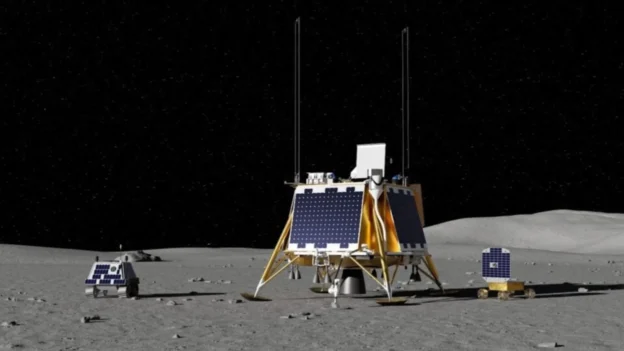Canada is preparing to make space exploration history. space exploration with the launch of its first lunar rover, which will be carried by the Blue Ghost 4 mission of the private company Firefly Aerospace. The Canadian rover, developed by Canadensys Aerospace, will explore the lunar south pole in search of strategic resources such as frozen water and other elements present in permanently shadowed regions.
The announcement follows NASA’s award of a $176.7 million contract to Firefly to carry out this mission, which will also include other U.S. science instruments and the MoonRanger microrover. The launch is scheduled for 2029 as part of the CLPS (Commercial Lunar Payload Services) program, an initiative that seeks to accelerate the scientific presence on the lunar surface through partnerships with the private sector.
A lunar rover designed for extreme conditions
Toronto-based Canadensys Aerospace is leading the development of the rover, which has been built to withstand the harsh lunar nights, where temperatures can drop below -130 °C (-130 °F). The rover will feature proprietary technology for semi-autonomous navigation, communications, dust mitigation and mobility over rough terrain.
Its instruments include a neutron spectrometer, a set of multispectral cameras, radiation sensors and a thermal radiometer developed in collaboration with NASA. The objective is to analyze the chemical composition of the regolith, detect possible ice reservoirs and assess radiation exposure in the region.
Firefly Aerospace, a new protagonist in lunar exploration
Firefly Aerospace is positioned as one of the emerging leaders in the translunar cargo transportation. The Texas-based company was the first private company to achieve a fully successful landing on the Moon. Its Blue Ghost lunar lander has demonstrated its technical capability, gaining NASA’s confidence for future scientific missions.
The fourth Blue Ghost mission mission represents a key step toward a more constant presence on the lunar surface. It will also include static experiments, stereoscopic cameras to study the effects of the engines on the lunar soil and a laser retroreflector station to improve long-term lunar navigation.
An international effort with Canadian leadership
The Canadian project involves universities such as Western, York, Alberta and Sherbrooke, as well as industrial partners such as NGC Aerospace, Leap Biosystems and Encoded Mountain. In addition, satellite communication stations provided by Kongsberg Satellite Services, based in Norway, will be used.
Scientific leadership will be provided by planetary geologist Gordon “Oz” Osinski, who will coordinate studies on lunar habitability and the feasibility of future manned bases.
Canada seeks to position itself as a major player in the lunar economy, and this mission is a decisive step in that direction.
Source: Gizmodo
Photo: Firefly Aerospace

